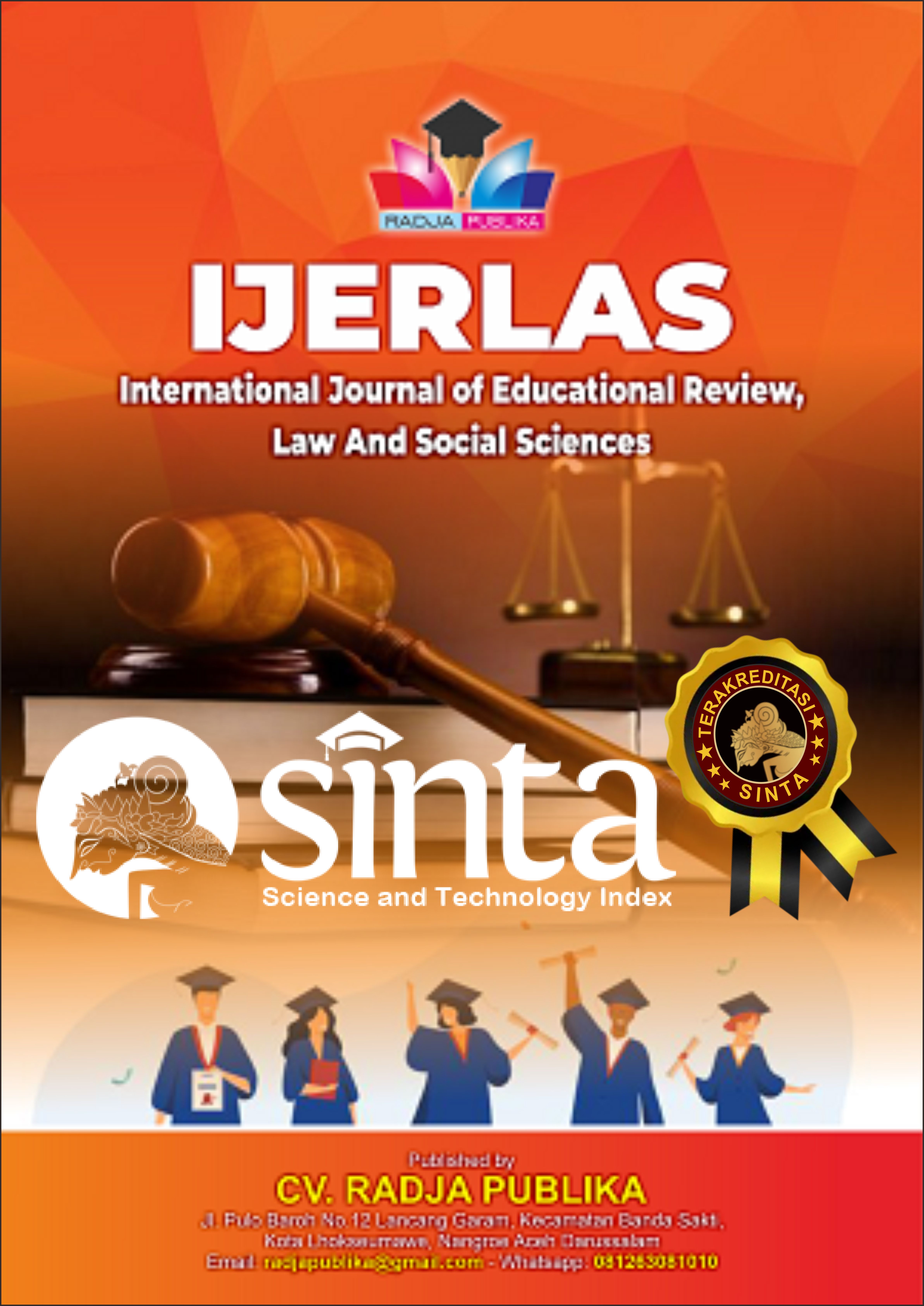THE EFFECT OF E-SERVICE QUALITY AND PERCEIVED EASE OF USE ON E-CUSTOMER LOYALTY WITH E-CUSTOMER SATISFACTION AND E-TRUST AS INTERVENING VARIABLES IN DIGITAL PAYMENT INTERVENING VARIABLES ON DIGITAL PAYMENT FUNDS IN THE CITY OF MEDAN
Main Article Content
Nabawi Putri Marisa Nasution
Arlina Nurbaity Lubis
Fadli
Cashless phenomenon is noticeable as various kinds of e-wallet arise in Indonesia. E-wallet is an application used as a digital payment method, by which one is able to save money and make transactions of online or offline shopping using smartphones, one of which is Dana Application. The objective of this research is to reveal and to analyze the effects of e-service quality and perceived ease of use on customer loyalty with customer satisfaction and e-trust as the intervening variables in the digital payment of DANA in Medan, Indonesia. The population encompasses all visitors at two malls in Medan performing transactions using e-wallet of DANA. A sample size of 150 respondents are taken by using non probability sampling technique. The data analysis method used is Structural Equation Modelling-Partial Least Square (SEM-PLS). The research findings show that Customer Satisfaction (Z1) has positive and significant effects on E-Trust (Z2). E-Service Quality (XI) has positive and significant effects on Customer Loyalty (Y). E-Service Quality X1) has positive and significant effects on Customer Satisfaction (Z1). E-rust (Z2) has positive and significant effects on Customer Loyalty (Y). Perceived Ease of Use (X) has positive and significant effects on Customer Loyalty (X). Perceived Ease of Use (X2) has positive and significant effects on Customer Satisfaction (21). E-Service Custity (XI) has positive and significant effects on Customer Loyalty (Y) through Customer Satisfaction (Z1) and E-Trust (Z2). Customer Satisfaction (Z1) has positive and significant effects on Customer Loyalty (Y) through E-Trust (Z2). Perceived Ease of Use Sa has positive and significant affects on Customer Loyalty (Y) through Customer Satisfacion (Z1) and E-Trust (Z2). E-Service Quality (X1) has pastive and significant effects on E-Trust (Z2) through Customer Satisfaction (Z1). Perceived Ease of Use (X2) has postive and significant effects on E-Trust (Z2) through Customer Satisfaction (Z1).
Abdillah, L. A. (2022). Peranan Media Sosial Modern (1st ed.). Bening Media Publishing.
Bahrudin, M. & Zuhro, S. (2016). Pengaruh Kepercayaan Dan Kepuasan Pelanggan Terhadap Loyalitas Pelanggan. Jurnal Bisnis Dan Manajemen Islam, 3(1).
Choi, Y., & Mai, D. Q. (2018). The Sustainable Role of the e-Trust in The B2C e-Commerce of Vietnam. Sustainability, 10(1), 291.
Chole, N., & Dharmik, K. M. (2018). Digital marketing & Social Media. International Conference Business Remodelling: Exploring New Initiatives In Key Business Functions (pp. 163-167). Nagpur: Tripude Institute of Management Education.
Coviello, Milley, & Marcolin. (2019). Understanding IT-Enabled Interactivity in Contemporary Marketing. Journal of Interactive Marketing, 15(4), 18-33.
Davis,F. D. (1989). ”Perceived Usefulness, Perceived Ease of Use, and User Acceptance of Information Technology”. MIS Quarterly.Vol. 13 No. 5: pp319-339.
Griffin, J. (2016), Customer Loyalty. Jakarta: Erlangga.
Insight Asia. (2023). Indonesia’s E-wallet Industry Outlook 2023.
Iram, M., & Chopade, T. (2018). Effectiveness of Digital Advertising on Instagram Followers. International Conference Business Remodelling: Exploring New Initiatives in Key Business Functions. Nagpur: Tripude Institue of Management Education. 283-302.
Jogiyanto. (2007). Sistem Informasi Keperilakuan. Revisi ed. Yogyakarta: Andi Offset.
Kotler, P. & Amstrong, G. (2012). Dasar-Dasar Pemasaran. Jakarta: Prenhalindo.
Kotler, P. & Keller, K. L. (2016). Marketing Management. 15th ed. New Jersey: Pearson Pretice Hall, Inc.
Kotler, P. and Kevin Lane Keller. (2019). Marketing Management. 4th Edition.
Mahendra, K. P. & Indriyani, R. (2018). Pengaruh Kepercayaan Pelanggan terhadap Kepuasan Pelanggan CV Mitra Perkasa Utomo. Agora, 7(1).
Melydrum. (2019). Manajeman Pemasaran Teori dan Implementasi. Andi, Yogyakarta.
Orso, G. (2004). Colonic Motor Dysfunctions In A Mouse Model of High-Fat Diet-Induced Obesity: An Involvement of A 2B Adenosine Receptors. Purinergic Signalling, 13, 497-510.
Pachpande, B. R., & Kamble, A. A. (2018). Study of E-wallet Awareness and its Usage in Mumbai. Journal of Commerce and Management Thought, 9(1), 33.
Rahadian, L. (2019). Industri Pembayaran Digital: Bank dan Fintech Berebut Pasar.
Suki, N. M. (2011). Exploring The Relationship Between Perceived Usefulness, perceived ease of use, perceived enjoyment, attitude and subscribers’ intention toward using 3G mobile services. Journal of Information Technology Management. 22(1), 1-7.
Surapti, N. W. S. & Suariedewi, I. G. A. A. M., (2020). Effect of Mobile Service Quality to E-Trust to Develop E-Satisfaction and E-Loyalty Mobile Banking Services. International Research Journal of Management, IT & Social Sciences, Volume 7.
Wibowo, A. (2006). Kajian tentang Perilaku Pengguna Sistem Informasi dengan Pendekatan Technology Acceptance Model (TAM), Universitas Budi Luhur, Jakarta.




























